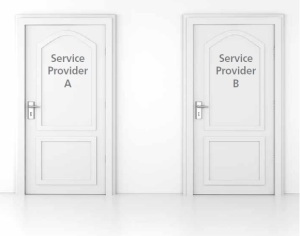by
Carol Ko, Staff Writer | August 22, 2013
From the August 2013 issue of HealthCare Business News magazine
Nowadays, health care providers are faced with more options than ever before, as the service industry becomes increasingly fragmented and competitive. OEMs, ISOs, and even software and parts companies are all jumping into the fray. DOTmed Business News spoke with representatives from some of the biggest names in health care equipment, third-party companies, and heads of in-house teams to get their take on two big topics — things to look out for when choosing a contract and the expanding role of C-suite executives in service contracts.
DMBN: What are some common mistakes you see among hospitals as they’re choosing service providers? What are some questions they should be asking that you see commonly overlooked?
Lisa Collins, VP, service business management, Siemens Healthcare: This is not a mistake but more of an obvious area of focus — the patient. Patient safety and satisfaction are paramount, and looking at that experience through the lens of the customer is important when you think about how to maintain and optimize your imaging equipment. Some facilities try to take on too much risk without looking downstream. A good service partner thinks proactively, even using predictive models— not just a reactive approach — when it comes to service, always keeping an eye on how these decisions will ultimately impact patient care.



Ad Statistics
Times Displayed: 130299
Times Visited: 7399 MIT labs, experts in Multi-Vendor component level repair of: MRI Coils, RF amplifiers, Gradient Amplifiers Contrast Media Injectors. System repairs, sub-assembly repairs, component level repairs, refurbish/calibrate. info@mitlabsusa.com/+1 (305) 470-8013
Joe Graham, VP, service sales and marketing, Toshiba: I don’t really view hospitals and non-hospitals making mistakes — it’s more, in my opinion, a question of what they’re looking to buy, how much they’re willing to spend and what risk they’re willing to accept. It’s trying to find a balance between those tasks. Every solution has some sort of value, but if there’s a disconnect between a customer’s interest and the service solution, they might focus on price more than quality and service delivery. Or they might look at something they think is important and miss certain other components of the contract.
One of the ways service agreements are less costly is that they’re defeatured — they might not have the coverage a customer might expect. In MR, maybe the MR magnet is not covered —they [the service provider] might say “we’re covering the rest of the system but the magnet is not covered.” In CT they might gauge their service by volume or usage and the customer will be using the system beyond what was quoted so there would be additional volume related costs beyond that.
Bill Kollitz, head of Service Marketing for Bayer Radiology & Interventional: It’s really a focus on the upfront cost of the service versus the total cost of ownership. Sometimes, there’s a viewpoint that cost- of-service may reflect its overall value when, in fact, what a customer should be asking is “what’s the overall cost of maintaining this equipment over the lifetime of its use? “


Larry Sheppard
Choosing A Service Provider
August 13, 2013 03:27
My department is involved in all service agreement selection prior to the PO being cut to the vendor by Materials Management. There are a lot of variables today that have to be taken into consideration prior to selection of a vendor to assure the right coverage for the right equipment. Capital equipment purchases are tightening up so one has to get the most from the acquisition.
*Software upgrades are becoming unaffordable without a service agreement and most ISOs can't provide them. *Categorizing your equipment by risk is important. Since in most cases MRI is not a trauma device, you may save money by not taking extended coverage hours.
* Pooling glassware spreads the risk and reduces cost on CT coverage.
*In house service provides some great contributions to savings with several modalities, but in others it can be a cash cow to maintain.
*Standardizing your equipment inventory adds benefit to your negotiating and in-house training strengths.
With the changes that are taking place in healthcare today, service will increase in the percentage of contribution of OEM revenues and I believe they will utilize their negotiating ability to eliminate third party or ISO.
to rate and post a comment